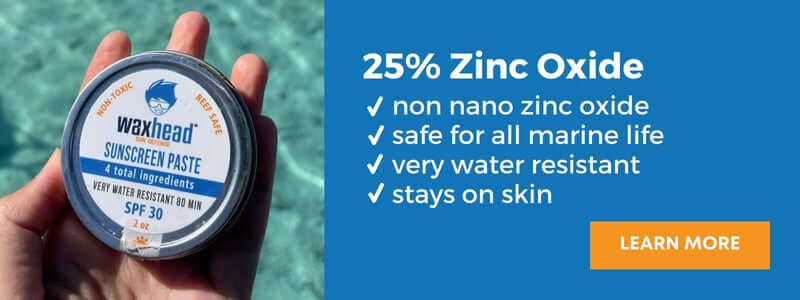A customer recently asked us this question so we turned it into a blog post, in case someone else wonders: What's SPF?
It is important to understand SPF relates ONLY to effects on UVB rays. It has nothing to do with effectiveness against UVA rays, the ones which cause damage below the skin's surface.
SPF (sun protection factor) is a system introduced in 1974 and rats how much UVB radiation is needed before a sunburn shows up on protected skin relative to the amount of UVB radiation required to produce sunburn on unprotected skin. As the SPF number increases, sunburn protection also increases.
The SPF number on a sunscreen label measures how long a sunscreen will protect you from UVB rays — the rays that cause sunburn and the outer layers of the skin (the epidermis).
Here's some more information on SPF before we answer continue to answer the question, "What's SPF?"
Surface-Level Skin Protection
SPF refers to the protection of the skin's outer surface only. The sun protection factor measures the amount of UVB rays that reach the top layers of skin. It does not measure the protection of UVA rays, which go into deeper skin layers.
Many high SPF sunscreens over-promise sun protection and give a false sense of security. People are overexposed to UVA rays that go deeper into skin layers and thus raise the risk of cancer.
In other words, high SPF sunscreen formulations can protect the skin surface more than it protects lower skin layers, producing a disconnect between surface effects (sunburn) and damage below. This is one reason why skin cancer continues to increase even though Americans buy more and more sunscreen.
SPF is Often Overstated
Many sunscreen formulations overstate the SPF number on the bottle. Manufacturers can add anti-inflammatory ingredients to their sunscreen formulas, which stop the skin's natural red reaction, thereby creating the impression that damage is not occurring, while it actually is occurring, especially in deeper layers.
Diminishing Return on SPF
An SPF of 30 blocks 97% of the UVB rays hitting your skin. An SPF of 50 blocks 98% of the UVB rays. That is a diminishing return on SPF protection.
For example, a person using a 30 who gets 4 hours of sun will receive 240 minutes / 30 = 8 equivalent minutes of UV effects, while another using a 50 will receive 240/50 = 4.8 minutes. This is a minuscule difference.
So, what SPF do I need?
We recommend a sunscreen with an SPF rating of 30-40, and if you're considering something higher, make sure it doesn't have one or more of the above issues.
Better yet, send us a link, and we'll be more than happy to review its ingredients in detail and give you our honest evaluation. It may be that someone's developed an honest-to-goodness validly safe high SPF product, and we are absolutely interested in learning about that!
Also, look for the words "Broad Spectrum" — this helps make sure you’re protecting yourself from UVA rays (as well as UVB rays).
Make sure it contains NO petrochemicals, and that it either uses only non-nano zinc oxide as an active ingredient (at least 20%, but 25% is best) and that if it contains no more than 5% titanium dioxide.
Always read the active and non-active ingredient list to make sure you’re not putting harmful chemicals on your skin.
NEXT STEPS
1. Know your ingredients — Flip over your sunscreen and read the ingredients. We want everyone to know what good ingredients are, regardless of whether they use our products or not. Your health is worth it.
2. Buy safe sunscreen — Waxhead is dedicated to using only the healthiest, safest, most effective ingredients in our sunscreens. Shop Safe Sunscreen here.
3. Teach a friend — If you know someone who might still be buying sunscreen with questionable ingredients, please share this post with him/her.
Sources
https://www.ewg.org/sunscreen/report/whats-wrong-with-high-spf
https://www.skincancer.org/blog/ask-the-expert-does-a-high-spf-protect-my-skin-better
https://www.fda.gov/about-fda/center-drug-evaluation-and-research-cder/sun-protection-factor-spf







































































